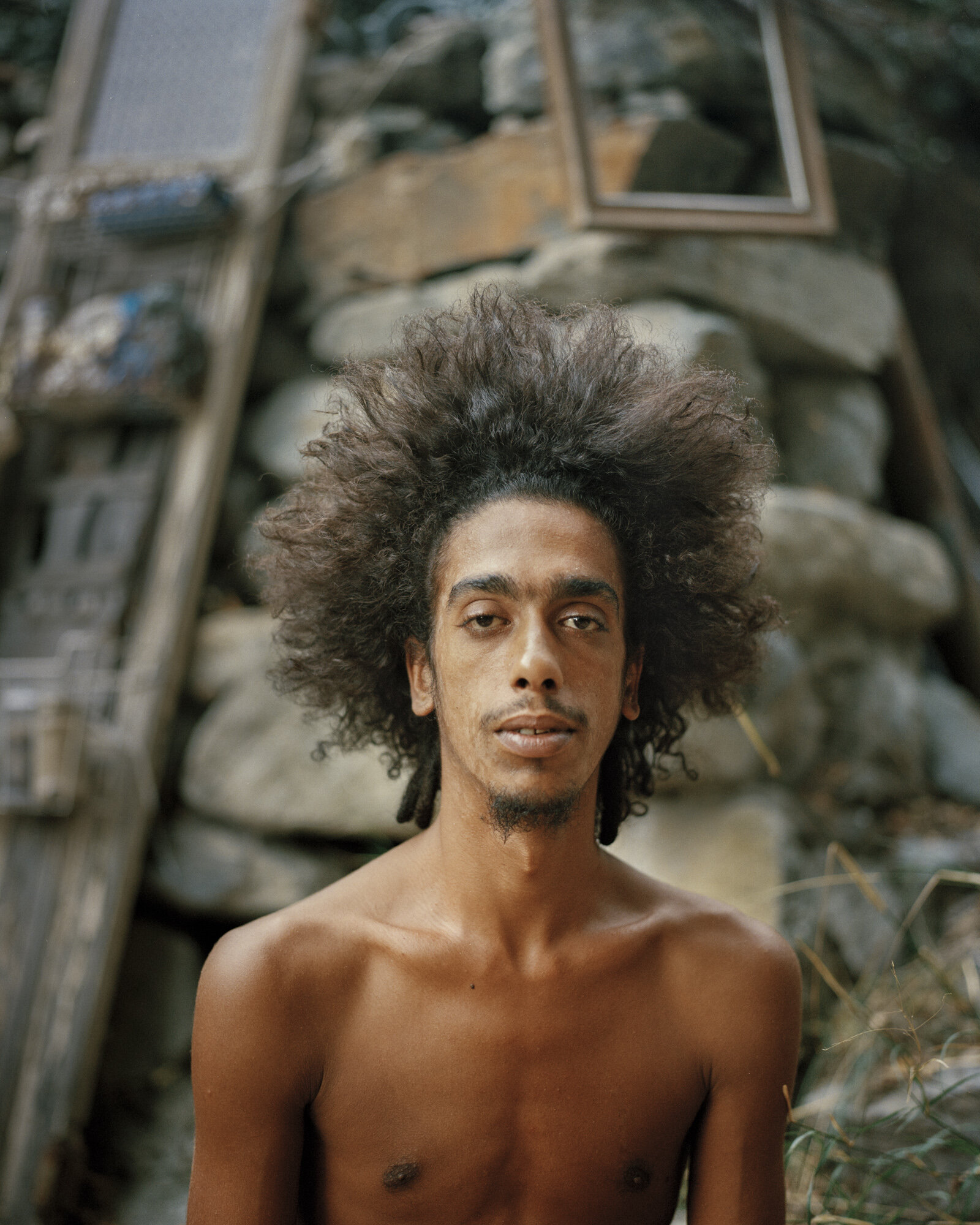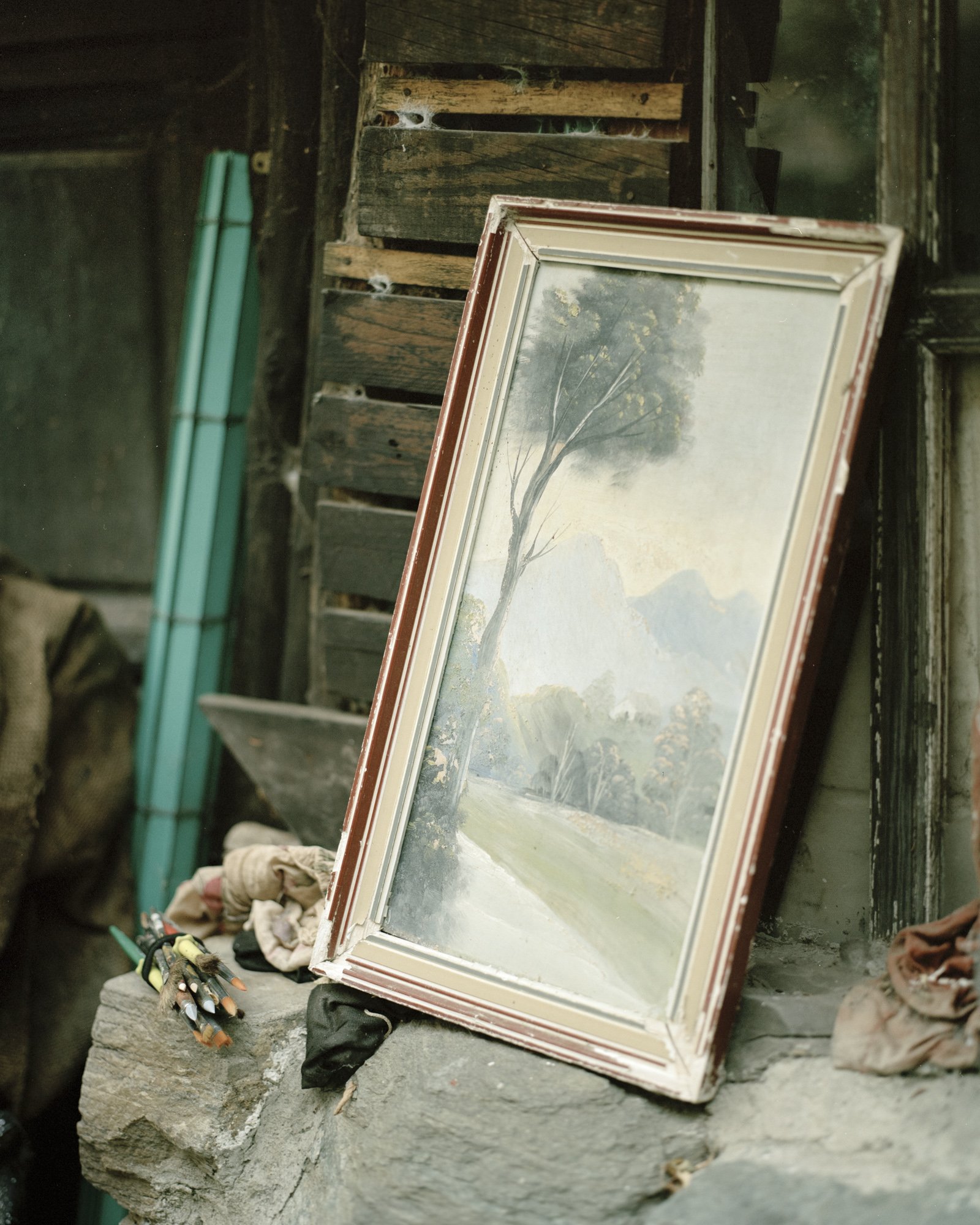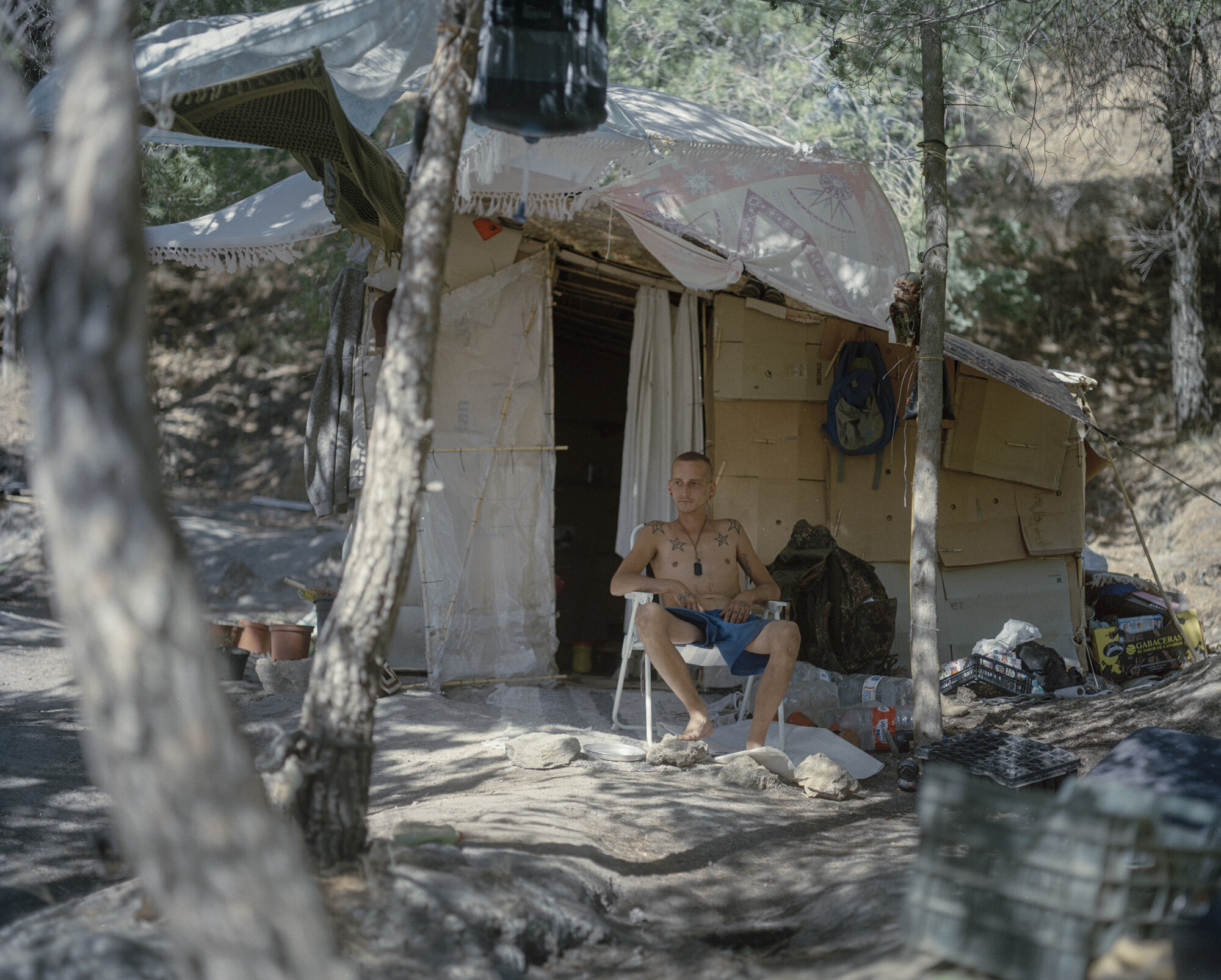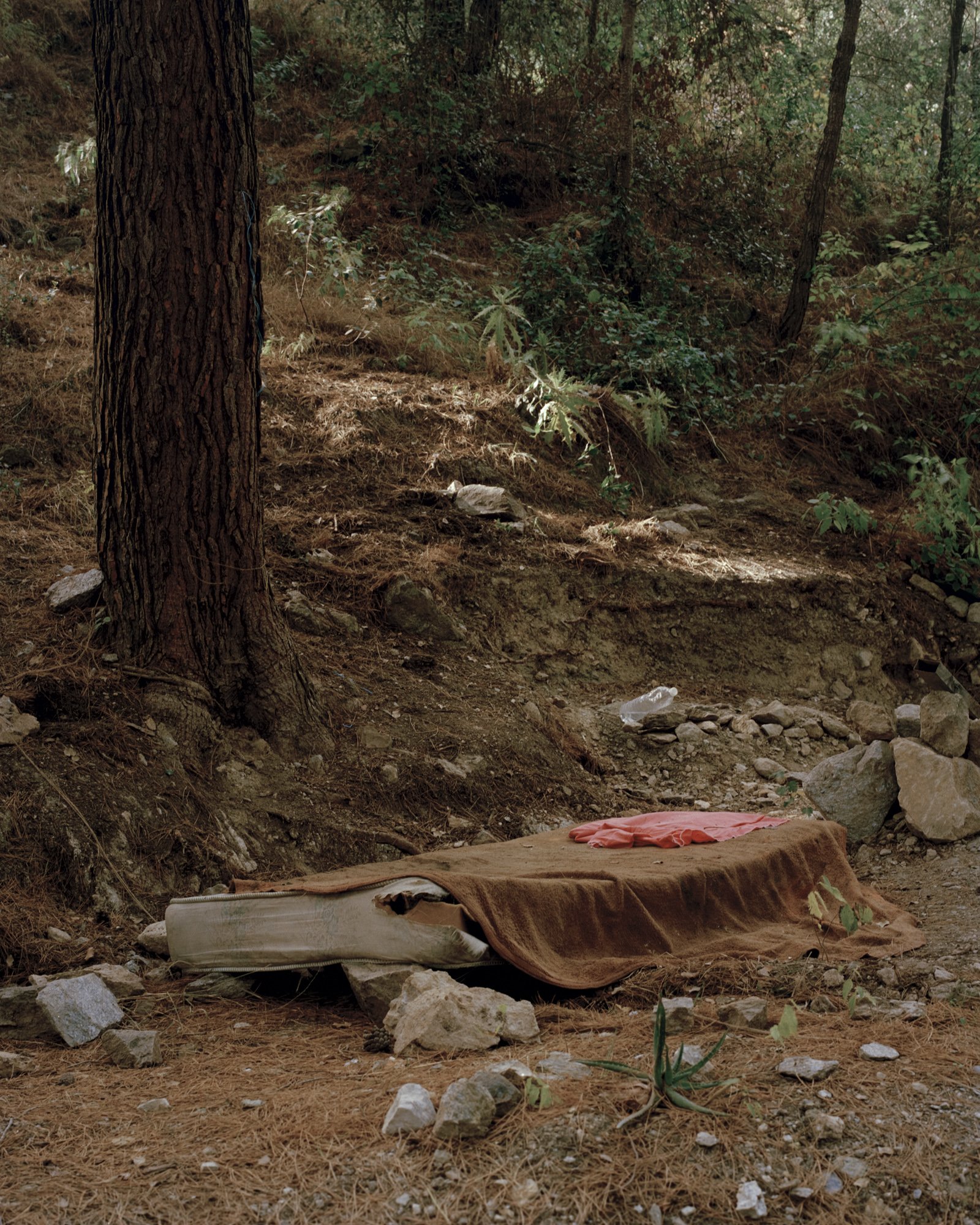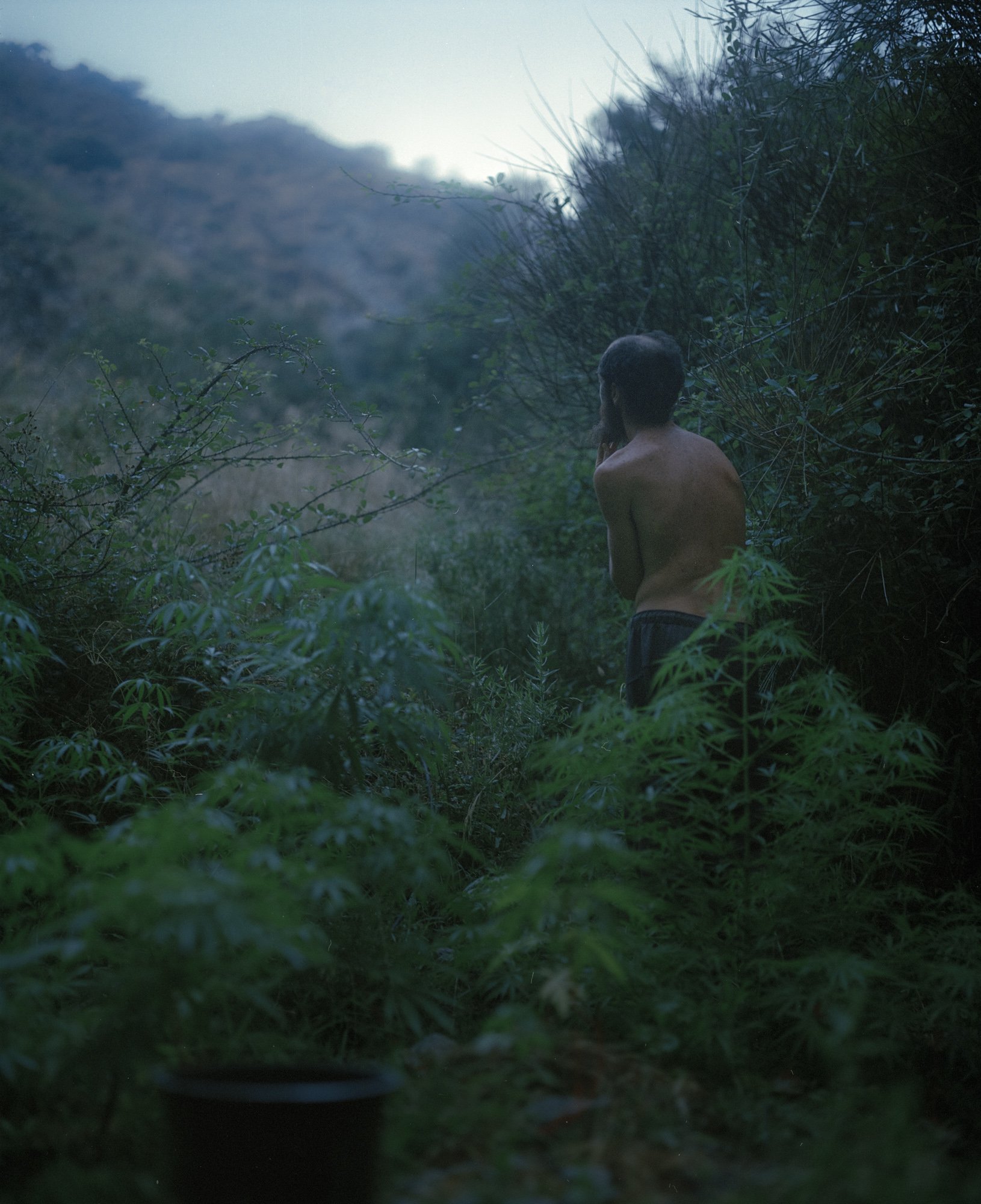Carsten Kalaschnikow
Under The Dwindling Surface
When I went hiking in a valley of the Alpujarras, the wild mountains south of Granada, I saw a young man washing his mirror in a small stream. He was about my age. Somehow I had to think of Narcissus, the hunter who rejected the love of others and fell in love with his own reflection. The Narcissus Myth is not only a parable of self-worship and of the concomitant exclusion of the other people in one's orbit. It is also an evocation of how vision—both optical and psychological—is constantly fleeting.
To me, Narcissus's attempt to embrace his image in the well feels like my attempt to evoke the seeable world in a photograph. What did I think I would encounter in this place? What did I think I would see here? I often do not know whether my focus should lie on myself or on the world beyond. Perhaps the people who live in this place are asking themselves the same questions. Maybe they are troubled by the same insecurities.
Weariness with civilization and the longing for a lived utopia drive many into the wilderness. Possibly this is how this commune in Andalusia, growing for 30 years, came into being. Many city dwellers plagued by society dream of solitude far away from worries and stress. A few live their vision for a while - and some even for many years.
Can you introduce us your series Under The Dwindling Surface, including how the community looks and functions and who might live there.
In 2016, I had an intriguing conversation with a guy I had just met at a party in Berlin. We talked about anything and everything. He told me that he had grown up in a commune in Valle de la Luna, Italy. His stories and this place he mentioned held a great attraction for me. Back at home, I did a little research to find this commune and learn if people still lived there, but I didn't find any useful information. So instead, I found this valley in Andalusia, Spain. A few weeks later, I traveled there. At first, I had a very romantic, simple idea of this place, which I tried to depict quite unreflectively and unconsciously in early stages of this work.
Over time, I learned that this is not a commune and not only a place but rather an accumulation of tiny, self-constructed houses, shelters, and hide-outs. Approximately 150 people live here, scattered in a valley of the Alpujarras, the wild mountains south of Granada. Below, at the entrance to the settlement, are the tents. Further up, the residents cobbled together sheds with wood, plastic sheets, and recycled materials. Even further up, there are some stone houses. Some have lived here for a few years. For one, two, ten years. Some people come here without a plan, without knowing how long they will stay. Some have more possessions, others less. Some have caravans that allow them to move quickly.
The people who came to this valley searched for tranquility apart from the hypercapitalist, hectic life. They wanted to create a utopia. As far as I know, a small group of people bought land there 30 years ago. However, they remained anonymous so that the land would not belong to anyone, and now everyone could live there for free. During this time, many people came and went. Many also no longer settle on the communal land but in the nature reserve, where it is actually not allowed to live. This whole original idea developed its own chaotic dynamics. Nevertheless, there is still a sense of togetherness among some, and good neighborliness is valued.
Most people imagine a commune secluded and independent from the outside world. That is not the case here. The former commune developed into a center of attraction for tourists who want to confirm their naive idea of hippie life there. Some residents got cars and money. Some even have solar panels, TVs, and game consoles. Then again, other people bake cookies or bread, which they can sell on the market in the village nearby.
The next question comes from your statement, "I often do not know whether my focus should lie on myself or on the world beyond. Perhaps the people who live in this place are asking themselves the same question.
How did focusing your time in the valley serve as a mirror to teach you about yourself and the world beyond?
I am a person who tends to ruminate a lot and be very critical towards society and of myself. Often I have the feeling that I don't really belong anywhere. This feeling is reflected in the people I have met in this valley. I see a commonality there and feel connected to them in that way. I've always lived in relatively large cities, surrounded by a lot of concrete, post-war architecture, and dreariness. And I don't always get along so well with the urban hustle and bustle, either. In everyday fantasies, I've always caught myself thinking, "that's it now. I'm breaking up with society and moving to the mountains, far away from it all." I like to be alone, and I enjoy the peace and quiet.
On the other hand, I am very interested in the human condition and I enjoy learning from others. And photography or visual media in general, are my tool to connect to other people and the outside world.
How much time did you spend working on this series and how did you approach people you wanted to meet and photograph? From your conversations with them (the locals) how does their reality differ from society's assumptions of who they might be?
I started this series in 2016 and have been there from time to time. In between, there were also times 2 years in which I have not visited this place. When I am there, I always try to spend between two and six weeks there. Often I am timid and have a hard time asking new people if I can photograph them. It always feels a bit invasive and weird. I usually photograph people when I feel an irresistible urge - like the photo of the man washing his mirror in the river. Or when I've already established a bond with a person. It's imperative to me that the person I want to take a photograph of feels comfortable. But I also have to feel comfortable in the process.
The way we dress, the way we wear our hair, and the way we live always communicates something to the outside world. Because of this outward effect, people always develop some kind of image. But, of course, this is also true the other way around. When I first visited this valley, I also had preconceived notions of this place. As time went by, I have learned to look at this area and the people who live here in a much more nuanced way. I am only a photographer. Photography is a superficial medium in many ways. I can't capture the inner world of people or who they really are. But I try to work with them instead of just creating narratives about them. Photography for me is a collaborative process between me - the photographer - and the subject. The subject I'm dealing with right now comes with many clichés that I don't like to serve.
Why is it important to this series to withhold information, how does that help reduce the cliches surrounding the subject matter?
Initially, I wanted to photograph a reportage about this place. I tried to capture dynamic, authentic moments as an unnoticed observer as much as possible and chose a more photojournalistic approach. Looking back, I would say I didn't really know what I was doing. Moreover, I struggled with approaching people and asking them if I could photograph them.
On my next visit, a year later, I brought a medium format camera. The images became a bit more static but also more focused, calm, and tender. Some people recognized me from my first visit, too. As a result, I no longer felt so foreign to the place and the people there, and I also became a little more confident. Taking pictures was easier for me. I moved away from the need to depict reality. As time went by, the series became more dreamy and mystical. And I am sure that the work will change again after my next visit. I like that I take so much time to do this. It allows me to reflect on the process and clarifies what exactly I want to depict or communicate. I learned the more I explain each image in detail, the more power it loses. I like to remain vague. The photos serve as a projection screen for the viewers to tell their own stories. Being too explanatory and literal can also be detrimental to the idea of the story. I no longer feel the need to say:" This is reality", "It's about hippies or the commune XY." The atmosphere and the emotions are much more important to me and build the basis of the work. I hope that others look at these pictures with the same empathy and openness as I see this place.
Keep up to date with Carsten Kalaschnikow’s latest work here:
Instagram
Website


